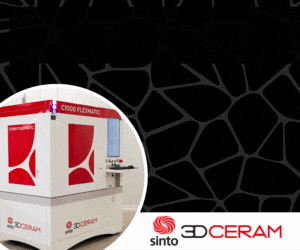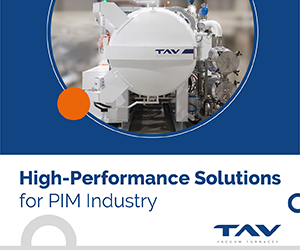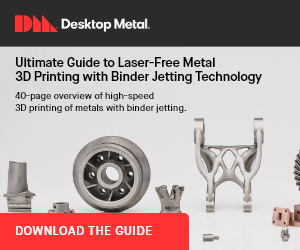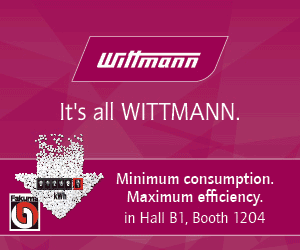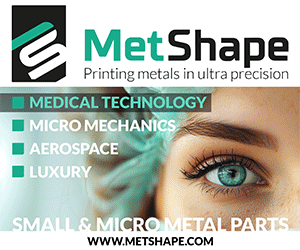MPIF award winning metal injection moulded (MIM) products 2007
August 12, 2007
MIM producers featured extensively in the winners’ list of the Metal Powder Industries Federation’s (MPIF) 2007 ‘Powder Metallurgy Design Excellence Awards’ competition. The awards were presented during the 2007 International Conference on Powder Metallurgy and Particulate Materials held in Denver, 13–16 May 2007.
For an extended feature with additional input from the award winning companies see the September 2007 issue of Powder Injection Moulding International.
Orthodontic bracket, slide and removable drop-in hook
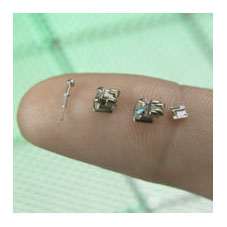 Flomet LLC, DeLand, Fla., USA and its customer Ormco Sybron Dental Specialties, Orange, Calif., USA, won the MPIF Grand Prize for three parts – bracket, slide, and removable drop-in hook – used in the Damon 3MX self-ligation orthodontic tooth positioning system. One bracket and one slide go on each tooth with the hook an option for about 5% of the teeth. The very tiny, intricate parts are made by MIM from 17-4 PH stainless steel powder to a density of 7.5 g/cm³.
Flomet LLC, DeLand, Fla., USA and its customer Ormco Sybron Dental Specialties, Orange, Calif., USA, won the MPIF Grand Prize for three parts – bracket, slide, and removable drop-in hook – used in the Damon 3MX self-ligation orthodontic tooth positioning system. One bracket and one slide go on each tooth with the hook an option for about 5% of the teeth. The very tiny, intricate parts are made by MIM from 17-4 PH stainless steel powder to a density of 7.5 g/cm³.
They have impressive physical properties: a tensile strength of 172,000 psi and yield strength of 158,000 psi. All of the parts are made to a net shape. The customer tumble polishes them and performs a brazing operation before assembly.
Trigger Guard
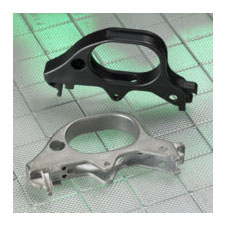 Megamet Solid Metals Inc., Earth City, Mo., USA, won the ‘Hand Tools/Recreation’ category for a rifle trigger guard made by MIM for Modern Muzzleloading, Inc., Alabama, USA. The MIM guard supports the trigger group and hammer in the “quick detachable trigger” mechanism in a 50 caliber muzzle-loading hunting rifle. Produced to a density of 7.4 g/cm³, the 88g MIM steel part has an as-sintered tensile strength of 94,250 psi and a 58,000 psi yield strength.
Megamet Solid Metals Inc., Earth City, Mo., USA, won the ‘Hand Tools/Recreation’ category for a rifle trigger guard made by MIM for Modern Muzzleloading, Inc., Alabama, USA. The MIM guard supports the trigger group and hammer in the “quick detachable trigger” mechanism in a 50 caliber muzzle-loading hunting rifle. Produced to a density of 7.4 g/cm³, the 88g MIM steel part has an as-sintered tensile strength of 94,250 psi and a 58,000 psi yield strength.
The part is held to critical dimensions of +/- 0.005 inches. Secondary operations include reaming three holes, tapping two screw holes, and deburring. The customer applies the black oxide surface finish and drills one hole because of a design change. It is claimed that the MIM process offered substantial cost savings.
MIM parts for hinge-style handcuffs
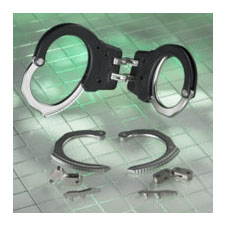 SSI Technologies, Inc., Janesville, Wis., USA, won the Award of Distinction for MIM and powder metallurgy (PM) parts used in tactical hinge-style handcuffs made by ASP, Inc., Appleton, Wis. USA, a law enforcement products supplier. The handcuffs use 14 PM parts, of which five are different designs—a lock pawl, bow, side and center links, and main links. Twelve parts are made from three stainless steel materials and two parts are made from MPIF FD-0405-60 steel. The four main links are made by metal injection molding to a minimum density of 7.5 g/cm3 and have a tensile strength of 78,000 psi.
SSI Technologies, Inc., Janesville, Wis., USA, won the Award of Distinction for MIM and powder metallurgy (PM) parts used in tactical hinge-style handcuffs made by ASP, Inc., Appleton, Wis. USA, a law enforcement products supplier. The handcuffs use 14 PM parts, of which five are different designs—a lock pawl, bow, side and center links, and main links. Twelve parts are made from three stainless steel materials and two parts are made from MPIF FD-0405-60 steel. The four main links are made by metal injection molding to a minimum density of 7.5 g/cm3 and have a tensile strength of 78,000 psi.
The other parts are processed by conventional or high-temperature sintering. The bow has a tensile strength of 103,000 psi, and has a large 0.090 inch radius in the areas where it touches the wearer’s wrist. These radii had been machined in the previous design. Three modified 316 stainless steel parts and two duplex stainless steel MIM parts make up the linkage assembly. A proprietary and patent-pending design allows the assembly to be swaged together without using rivets. The stainless steel parts meet stringent government corrosion resistance requirements.
Medical pin shroud implant device
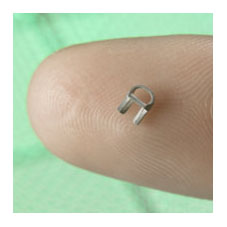 Kinetics, a Climax Engineered Materials Company, Wilsonville, Ore., USA, has earned the Award of Distinction for a 316L stainless steel metal injection molded pin shroud made for ArthroCare Corporation, San Juan Capistrano, Calif., USA, The critical part is used in the company’s Opus Magnum Knotless Implant device for arthroscopic surgical repair of torn rotator cuffs. The implant device secures a sutured tendon to the shoulder bone.
Kinetics, a Climax Engineered Materials Company, Wilsonville, Ore., USA, has earned the Award of Distinction for a 316L stainless steel metal injection molded pin shroud made for ArthroCare Corporation, San Juan Capistrano, Calif., USA, The critical part is used in the company’s Opus Magnum Knotless Implant device for arthroscopic surgical repair of torn rotator cuffs. The implant device secures a sutured tendon to the shoulder bone.
The pin shroud is implanted into a patient and is critical to the functioning of the rotator cuff surgical procedure. Made close to a net shape, the MIM pin has a typical density of 7.85 g/cm³, a tensile strength of 78,000 psi, and yield strength of 29,000 psi. Metal injection molding replaced an assembly made by wire-EDMing three parts and assembling them to each other by laser welding. Choosing the single MIM part reduced the customer’s final assembly time by two-thirds, from 15 minutes to just five minutes per unit.








